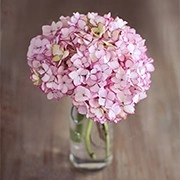The Charm of Lilac

Lilac, a popular shrub-like flower, is renowned for its unique fragrance and enchanting purple blooms. Originally native to parts of Southeast Europe and Asia, it is now widely cultivated in gardens and yards worldwide.
This article will explore the captivating charm of lilac, covering its growth habits, species classification, cultivation methods, symbolic meanings, and practical uses.
1. Growth Habits
Lilac is a highly cold-hardy deciduous shrub that thrives in temperate and subtropical climates. It can withstand temperatures as low as -30°C, demonstrating exceptional resilience, and has minimal soil requirements.
Lilacs prefer a sunny environment but can grow in partial shade, which may reduce flower production. They generally bloom from late spring to early summer, with a flowering period lasting two to four weeks from May to June. Lilacs grow relatively quickly and can form dense flower clusters a few years after planting, adding a vivid touch to gardens.
Do you know a single tree can reveal the secrets of an entire forest's health?
The record for the tallest sunflower has been surpassed multiple times, with some reaching over 30 feet tall.
Want Stunning Tulips? Here’s How We Care for Them at Home!
Mushrooms are nature's unsung heroes, connecting plants, enriching soils, and supporting ecosystems in countless ways!
Discover the Fascinating Secrets of Tulips!
Uncover These Astonishing Dandelion Facts You Never Knew!
Lilac- Syringa vulgaris - Everything you need to know about Lilacs
Video by GardenClips
2. Common Varieties
Lilac boasts a wide range of varieties, each differing slightly in flower color, fragrance, and blooming time. Here are some common lilac varieties:
-Common Lilac: This variety is the most prevalent, featuring purple flowers and a strong fragrance. Its tall growth makes it ideal for garden or yard planting, forming beautiful flowering hedges.
-White Lilac: White lilac is a variation of white flowers with a mild fragrance. It is often planted alongside other colored lilacs, creating a rich visual tapestry.
-Siberian Lilac: Known for its extreme cold tolerance, this variety can survive in harsh climates. Its deep purple blooms are striking and resilient.
-Dwarf Lilac: With a compact form, dwarf lilac is well-suited for border planting or flower beds. Though its flowers are smaller, the fragrance remains strong, making it highly ornamental.
-Japanese Lilac: Japanese lilac’s blooms are lighter in color with a mild fragrance, and it has a compact growth habit, commonly seen in Japan and Southeast Asia.
3. Cultivation Tips
Cultivating lilac is straightforward, and with a few simple tips, one can encourage vigorous growth and abundant blooms.
-Site Selection and Planting: Lilacs thrive in sunny locations with well-drained soil to prevent waterlogging. Plant them at a depth where the roots are fully covered, and water moderately.
-Regular Pruning: Lilacs grow quickly, and pruning after flowering helps maintain a good shape while encouraging new growth. Regularly removing old or diseased branches can also enhance flower quantity and quality.
-Proper Fertilization: While lilacs do not require heavy fertilization, adding organic or phosphorus-rich fertilizers before blooming can encourage flower production. Avoid high-nitrogen fertilizers as these may promote excessive leaf growth at the expense of blooms.
-Pest and Disease Control: Lilacs are susceptible to powdery mildew and aphids. Good ventilation and natural insecticides can help prevent and manage these issues.
4. Symbolic Meanings
The meaning of lilacs varies according to color: light purple lilacs usually represent youth and romance, while deep purple lilacs symbolize mystery and nobility. White lilacs convey purity and innocence, making them suitable for commemorating loved ones who have passed away.
5. Practical Uses
Beyond their ornamental value, lilacs are prized in the fragrance and medicinal fields. Their fresh, lasting scent is frequently used in perfumes, candles, and sachets.

Many premium perfume brands incorporate lilac extracts to add complexity and longevity to their scents. Lilac also has some medicinal value; in folk medicine, its flowers, leaves, or roots are sometimes used to treat minor health ailments.
Lilacs are more than just beautiful flowers—they carry rich emotional resonance and practical applications. In the future, this romantic plant will continue to offer people aesthetic pleasure, standing as an enduring legend in gardens worldwide.

 · Plant Team
· Plant Team